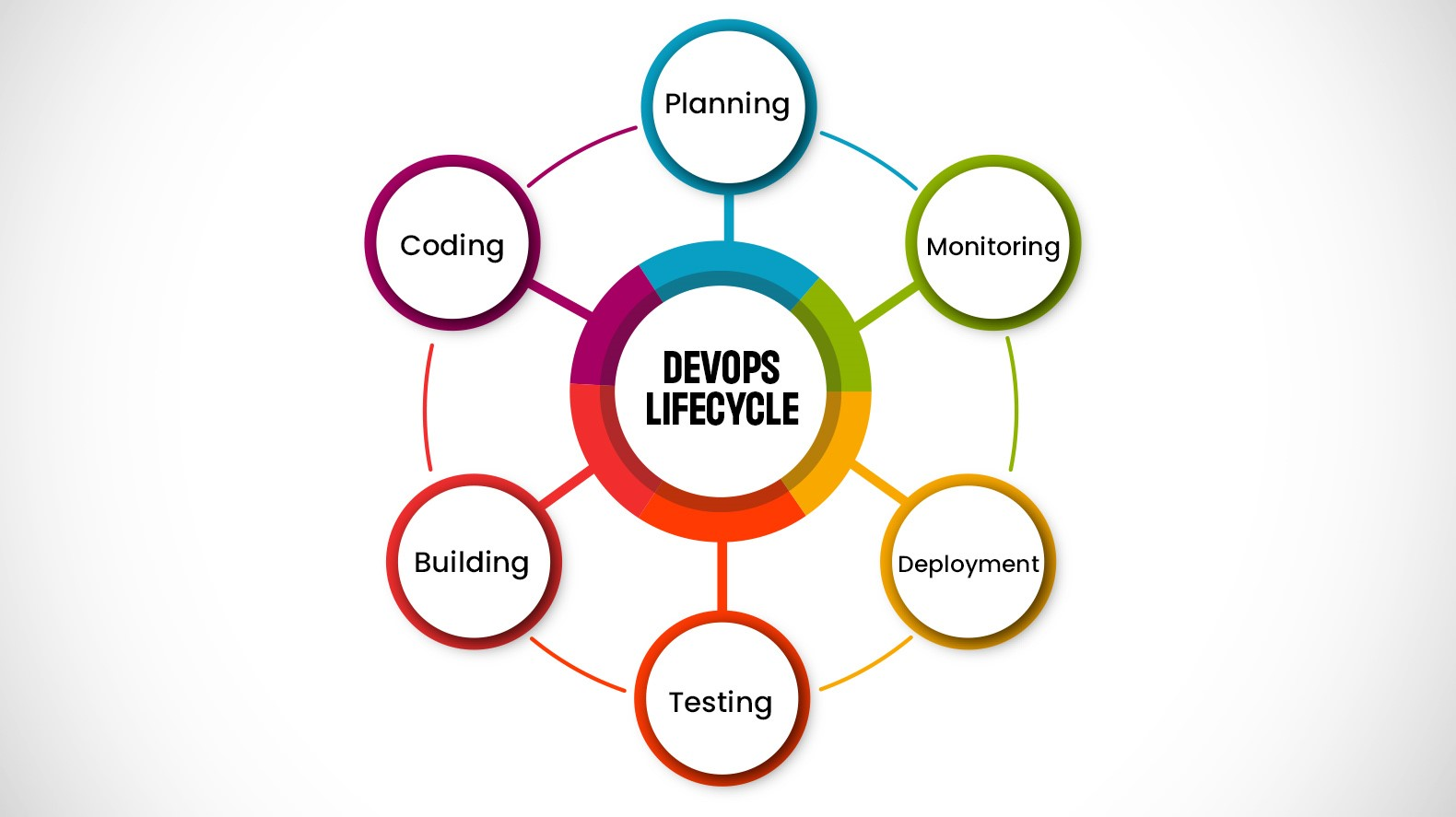Navigating the DevOps Lifecycle for Agile Software Development

The DevOps lifecycle is a crucial methodology that effectively integrates development and operations in the ever-changing field of software development. From concept to delivery, this article navigates through the intricacies of the DevOps development lifecycle, shedding light on its phases, components, tools, and its profound impact on agile software development.
Introduction to the DevOps Development Lifecycle
The DevOps development lifecycle is a holistic framework that emphasizes collaboration, communication, and automation across the software development and IT operations teams. As a result, the traditional silos are broken down, fostering a culture of continuous improvement and accelerated delivery.
Phases of the DevOps Lifecycle
-
Planning:
Teams determine the project's requirements, goals, and scope during the first phase. DevOps brings development and operations together at this early stage, ensuring alignment and setting the foundation for a collaborative workflow.
-
Coding:
After that, the software development happens during the coding process. DevOps encourages version control, collaborative coding, and automated testing to streamline the coding process and catch errors early on.
-
Building:
Third, automation takes center stage during the building phase. Developers may routinely integrate code changes into a common repository thanks to continuous integration platforms like Travis CI and Jenkins. In the end, you have a solid and dependable codebase.
-
Testing:
Fourth, quality assurance is paramount in DevOps. Testing automation, such as unit, integration, and acceptance testing, ensures that modifications to the codebase don't result in regressions. As a result, the likelihood of post-production defects goes down.
-
Deployment:
Fifth, the software release to the production environment happens during the deployment phase. Automation tools such as Ansible and Chef ensure consistency and reliability in deploying applications, eliminating manual errors and reducing downtime.
-
Monitoring:
Lastly, continuous monitoring is a key DevOps practice. It involves tracking the performance and health of the application in real time. In order to enable proactive problem-solving, monitoring systems such as Prometheus and Grafana offer insights into system activity.
Which Phases of Software Production are the Focus of DevOps?
Moreover, DevOps encompasses the entire software development lifecycle, emphasizing collaboration and automation at each stage. In other words, unlike traditional development models, where operations and development teams work in isolation, DevOps ensures a seamless flow of work from ideation to delivery.Key Components of DevOps
The following are the DevOps components:
-
Collaboration:
Collaboration between operations, development, and other stakeholders is a central pillar of DevOps. As a result of effective communication and collective responsibility, quicker problem resolution and improved overall efficiency are possible.
-
Automation:
Secondly, automation is the backbone of DevOps. From code integration to deployment and monitoring, automating repetitive tasks accelerates the development lifecycle, reduces errors, and enhances the overall quality of software.
-
Continuous Integration (CI):
Third, continuous integration (CI) techniques include scheduling code updates into a common repository, which enables teams to identify and fix problems early. Jenkins, GitLab CI, and CircleCI are popular tools that facilitate continuous integration.
-
Continuous Delivery (CD):
Then, by automating every step of the delivery process, CD expands on CI. It guarantees that software sees consistent releases per the need of the hour. In particular, Kubernetes and Docker are essential for achieving continuous delivery.
-
Infrastructure as Code (IaC):
Lastly, infrastructure as a code (IaC) replaces manual processes with code to manage and deliver infrastructure. Teams may automate infrastructure deployment using tools like Terraform and AWS CloudFormation, which guarantee consistency and scalability.
DevOps Lifecycle Tools
-
Jenkins:
Jenkins is primarily an open-source automation server that makes continuous delivery and integration easier. It facilitates the development lifecycle by automating repetitive operations related to developing, testing, and deploying code changes.
-
Docker:
In the second place, Docker revolutionizes containerization, providing a lightweight and consistent environment for applications. DevOps teams use Docker to bundle apps and their dependencies, enabling smooth deployment in various settings.
-
Ansible:
Secondly, Ansible is an effective automation tool for application deployment and configuration management. Because of its ease of use and agentless architecture, managing infrastructure as code is a common use for it.
-
Kubernetes:
Not to mention, the deployment, scaling, and maintenance of containerized apps can be automated with the open-source container orchestration platform Kubernetes. This leads to improved application reliability and efficient resource utilization.
In software development, the DevOps production environment is where things get real. DevOps practices ensure a smooth and reliable transition from development to production, reducing the risk of issues and improving overall system stability.
Embracing the DevOps Mindset
The DevOps mindset is a paradigm shift that goes beyond tools and processes. It's about cultivating a shared responsibility, teamwork, and continuous improvement culture. Further, teams that embrace the DevOps mindset are better equipped to adapt to changes, respond to challenges, and deliver high-quality software at a faster pace.
Continuous Learning and Improvement
One hallmark of the DevOps philosophy is continuous learning and improvement. Teams are advised to evaluate their procedures, spot bottlenecks, and make incremental improvements. This constant feedback loop ensures that software development practices are key objective of agile and aligned with evolving business needs.
Cultural Shift Towards Collaboration
DevOps also dismantles the conventional divisions that exist between development, operations, and other stakeholders. Collaboration becomes a central tenet, with teams working towards common goals. Communication channels are opened, and a shared understanding of the entire software development lifecycle is established.
Shared Responsibility for Quality
Nevertheless, in a DevOps environment, quality is not the sole responsibility of the testing team. Each member of the team, from operations to engineers, is accountable for the software's quality. Teams can identify and fix problems earlier thanks to automated testing and continuous integration, which lowers the chance that flaws will get into production.
DevOps in Action: Real-World Scenarios
To illustrate the practical application of DevOps, let's delve into a real-world scenario.
Scenario: E-commerce Platform
Imagine a scenario where a development team is working on an update for an e-commerce platform. The DevOps lifecycle is seamlessly integrated into the project:
Planning: First, the team collaborates to define the scope of the update, considering both functional requirements and infrastructure changes.
Coding: Then, developers collaborate to manage code changes using version control systems like Git. Automated code review tools ensure code quality and adherence to coding standards.
Building: Jenkins and other continuous integration technologies simultaneously compile and test the code every time a change is committed. This ensures a consistent and reliable codebase.
Testing: Further, automated testing scripts are executed during the testing phase, covering unit tests, integration tests, and acceptance tests. Any issues detected are immediately addressed by the development team.
Deployment: Also, the deployment process is automated using tools like Ansible or Kubernetes. This ensures a standardized and error-free deployment, reducing downtime.
Monitoring: Lastly, real-time platform performance is tracked via continuous monitoring technologies. In case of detection of any anomalies, the operations team can swiftly address them, ensuring a seamless user experience.
The Evolving Landscape of DevOps
As technology evolves, so does the DevOps landscape. New tools, practices, and methodologies continue to emerge, enhancing the capabilities of DevOps teams. Let's explore some emerging trends in the DevOps space:
-
GitOps:
GitOps extends the principles of DevOps to infrastructure management. It entails making infrastructure configurations based solely on Git repositories as the source of truth. Changes made in Git trigger automated updates to the infrastructure. It results in ensuring consistency and traceability.
-
AIOps:
Second is AIOps, or Artificial Intelligence for IT Operations, which leverages machine learning algorithms to enhance the efficiency of operations. As a result, regular process automation occurs, and possible problems are identifiable in a timely manner. Furthermore, insights help in decision-making.
-
Serverless Computing:
With serverless computing, infrastructure administration is abstracted away, freeing developers to concentrate only on writing code. Serverless technologies allow DevOps teams to grow and deploy apps without having to worry about managing underlying servers.
-
DevSecOps:
Security is an integral part of the DevOps lifecycle. DevSecOps ensures that security is not a bottleneck but rather an essential component of the development pipeline by integrating security practices into each stage of the development process.
Conclusion: Infrastructure and DevOps - A Symbiotic Relationship
In conclusion, the symbiotic relationship between infrastructure and DevOps is at the heart of modern agile software development. DevOps breaks down silos, fosters collaboration, and automates processes, while infrastructure ensures the stability, scalability, and reliability of applications in production.
Moreover, as organizations navigate the complexities of software development, embracing the DevOps mindset becomes not just a choice but a necessity. The DevOps lifecycle, with its phases, key components, tools, and services, offers a roadmap for organizations to stay competitive in an ever-evolving digital landscape.
So, embark on the DevOps journey, integrate its principles into your culture, and witness the transformative power it brings to your software development lifecycle. In the fast-paced world of technology, the agility and efficiency that DevOps provides will be your key differentiator. Embrace the future with DevOps, and let your software development thrive.
